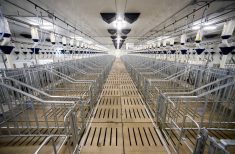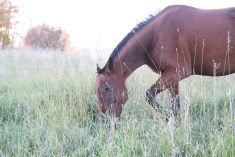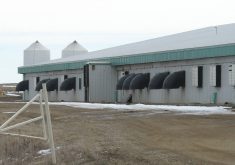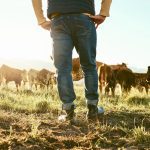Pen riders move through the feedlot corrals on horseback, watching the cattle with a sharp eye. They are looking for illness, weaving through the herd day after day. They hear the animal with atypical interstitial pneumonia (AIP) before they see it.
There’s a rattle in the heifer’s breathing and loud grunting. When they locate the animal the rest of the symptoms become unfortunately apparent: shallow breathing with minimal coughing, slightly gaunt and standing away from the rest of the cattle. Sometimes the infected cattle will stand with their feet spread apart, their necks extended and their heads lowered. Cattle with a serious case will be open-mouth breathing, often dripping froth and saliva. Green stool can be seen throughout the pen.
These symptoms can send pen riders and other professionals at the feedlot into overdrive.
Read Also
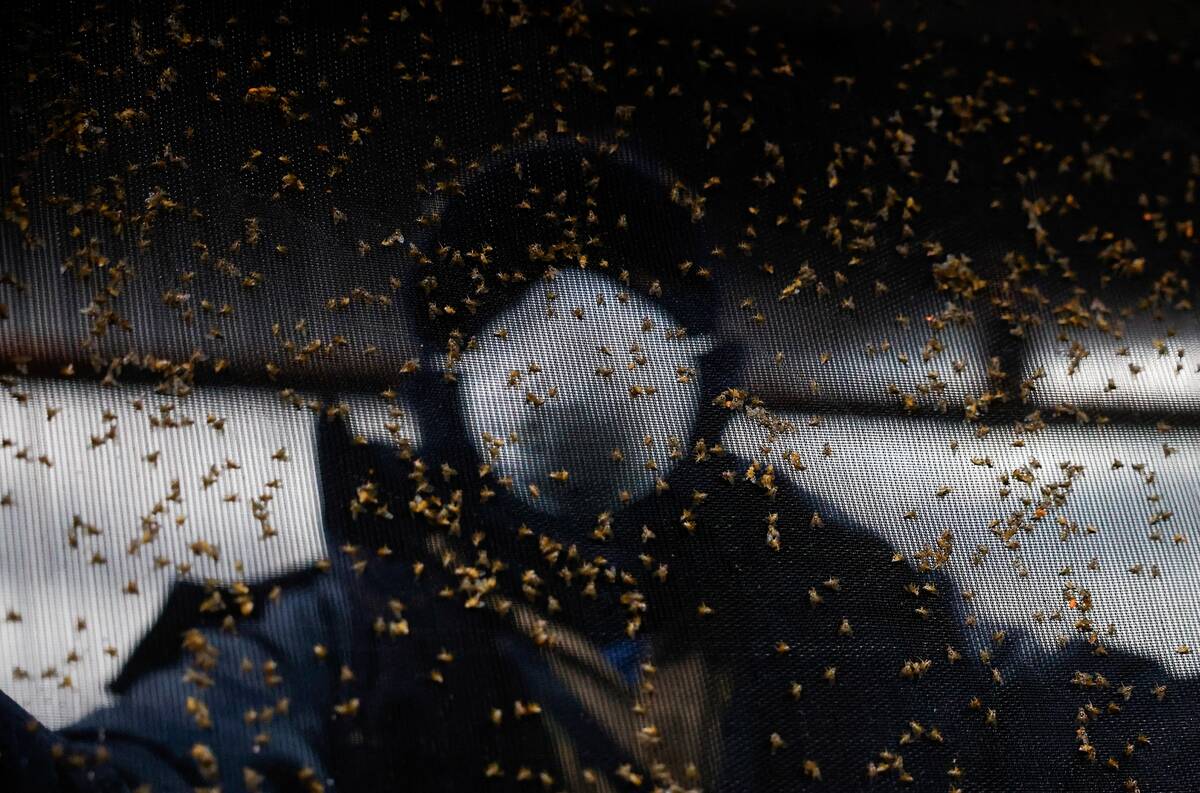
Canada too cold for New World screwworm
New World screwworm is closing in on the U.S. from Mexico, but the deadly livestock parasite isn’t likely to dig a surviving population in Canada, even if the fly species sneaks over the border.
Why it matters: AIP is a deadly disease that often plagues cattle in feedlots, but the cause of this illness is largely a mystery.
Emily Snyder, a researcher from the University of Saskatchewan, is looking into both the cause and prevention of AIP. Her work was just one of the projects highlighted this summer during a field day at the Livestock and Forage Centre of Excellence near Clavet, Sask.
“This is a disease that basically can strike cattle in the late feeding period, where they’ll be fine one day and then the next day they might come down with this disease, and it can certainly be rapidly fatal,” she said
Most of the cattle that die from AIP have pre-existing lung conditions, usually from a previous respiratory pathogen. In feedlots, AIP is one of the most common causes of mortalities. Other AIP causes not common in Canada are when cattle consume mouldy sweet potatoes or perilla mint.
While AIP more commonly affects cattle in feedlots, it can affect cow-calf operations as well. Those cattle are more likely to come down with the disease if they are grazing grass that suddenly becomes lush and is growing rapidly, especially where there has been rain and the grass is lush going into the fall.
“Feedlot AIP is distinct from these in that we know they’re not grazing lush grass, they’re in a feedlot,” Snyder said. “We know that they’re not eating mouldy sweet potatoes or perilla mint or anything like that. So we haven’t figured out the cause yet in feedlots.”
Currently, there is no real treatment for AIP. However, sometimes supportive treatment with diuretics and anti-inflammatories is effective. Usually over two or three days, the cattle will recover or die. A veterinarian should be consulted before any decision is made regarding the treatment of cattle with AIP.
Seratonin link
The human version of AIP is called acute respiratory distress syndrome (ARDS). That has given Snyder a pool of resources to cross-check and see if any relevant literature about ARDS might help her research AIP in cattle.
“They have investigated a number of different causes of this syndrome in humans. They know that having sepsis can cause it. They know that having severe burns over the course of the body can kind of set up this to occur. They’ve looked at different toxins, those sorts of things.”
Seratonin is another thing that has been examined for its possible role in human cases of ARDS.
“What do we know about serotonin? Everyone thinks it’s a happy brain chemical, right? Serotonin does a lot of other stuff in the body too. Some of the impacts it has are on the lung and the vasculature within the lung, and that’s what I’m interested in.”
She has also read beef cattle research where it was hypothesized that elevated serotonin could be a cause of AIP, but no one looked further into it at the time.
“So my thought was, ‘Well, let’s investigate it.’”
Serotonin is produced by bacteria in the gut. In humans, 90 per cent of the serotonin in the body is found in the cells lining the gastrointestinal system. The other 10 per cent is found in the brain.
Snyder noted that serotonin is also produced in the enterochromaffin cells in the gut, which are cells in the epithelial layer in the gastrointestinal tract. She said they are influenced to make serotonin by what the bacteria in the gut is doing.
“So we have two different sources within the gut, potentially, that could be causing elevated serotonin levels. So if we find that serotonin is elevated in these cattle that are affected with AIP, what we’re going to do in the later phases of this is we’ll start looking at those gut bacterial communities to see what those look like in cattle that have the disease.”
How much is normal?
Snyder started researching the role of serotonin in AIP in the summer of 2023. Researchers collected blood every 21 days from 40 steers and 40 heifers in the feedlot at the Saskatchewan centre. Data from the samples determines a normal level for serotonin to use for their research.
They have now started the second phase of their research. This consists of collecting blood samples from cattle in a commercial feedlot. They collect blood from cattle that have been diagnosed with AIP as well as from a healthy pen mate.
“We want to have that as a control to compare the serotonin in (a) healthy animal versus one that’s diagnosed with AIP. And so we’re in the process of collecting those now.”
They collected samples from feedlots in both Saskatchewan and Alberta this summer, and will like collect more next summer. Snyder said they are also getting lung samples from feedlot cattle that die from AIP.
Next steps
The goal, Snyder said, is to finally get to the bottom of this disease.
“If we can figure out what’s causing AIP, then we can start trying to come up with ways to prevent it or intervene or come up with a treatment that’ll work.”
But even if they do find that serotonin plays a role in AIP, research regarding treatment will be a few steps away, she noted. Still, she said she is committed to continuing learning how to manage AIP for producers and feedlots.
“With serotonin if we find that it’s elevated… there are ways that we could feed cattle differently that might impact which type of bacteria are present and what they’re producing. So those are some of the things that we could potentially know. If we find out that it’s not the case, that serotonin isn’t different in these animals with AIP, then we know, okay, well we’ve ruled that out, and we can go on and look at something else.”
She said she expects preliminary results within the next year and hopes the study will be able to wrap up in late 2025 or early 2026.




